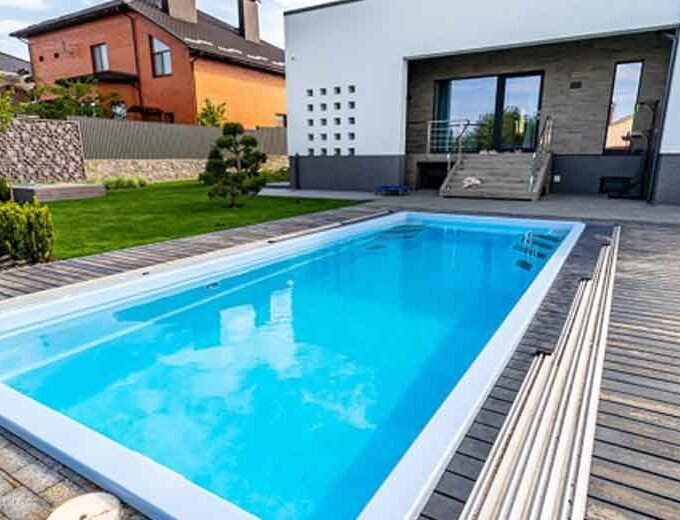Choosing the right Roofing contractor is a crucial decision for homeowners. The material you select can impact your roof’s durability, appearance, and overall performance. We will explore various roofing materials and guide you in choosing the best one for your home.
Various roofing materials
Asphalt Shingles
Asphalt shingles are one of the most popular roofing materials due to their affordability, versatility, and ease of installation. They come in various colors and styles, making it easy to find an option that complements your home’s aesthetic. Asphalt shingles are also relatively durable and can last 20 to 30 years with proper maintenance. However, they may not be the best choice for extreme weather conditions, as they can be prone to high winds and hail damage. When considering asphalt shingles, choosing high-quality options and ensuring proper installation to maximize their lifespan is important.
Metal Roofing
Metal roofing is known for its durability, longevity, and energy efficiency. This material can withstand extreme weather conditions, including heavy snow, high winds, and hail. Metal roofs are also fire-resistant and require minimal maintenance. They come in various styles and colors, allowing homeowners to achieve a modern or traditional look. One of the main advantages of metal roofing is its longevity, 40 to 70 years. However, metal roofing can be more expensive upfront compared to other materials. When choosing metal roofing, consider the long-term benefits and potential energy savings.
Wood Shingles and Shakes
Wood shingles and shakes offer a natural and rustic appearance that can enhance the charm of your home. They are typically made from cedar, redwood, or pine, providing a unique and attractive look. Wood roofing is relatively durable and can last 30 to 50 years with proper maintenance. However, wood shingles and shakes require regular upkeep to prevent mold, rot, and insect infestations. They are also less fire-resistant than other materials, although treatments are available to improve fire resistance. When considering wood roofing, factor in the maintenance requirements and local fire regulations.
Clay and Concrete Tiles
Clay and concrete tiles are known for their durability, longevity, and distinctive appearance. These tiles can last 50 to 100 years, making them one of the longest-lasting roofing materials. Clay and concrete tiles also resist fire, rot, and insects. They come in various styles and colors, allowing homeowners to achieve a Mediterranean or Spanish-inspired look. However, clay and concrete tiles are heavy and may require additional structural support for your roof. They can also be more expensive upfront compared to other materials. When choosing clay or concrete tiles, consider the long-term benefits and ensure your roof can support the weight.
Slate Roofing
Slate roofing is a premium material known for its elegance, durability, and longevity. Natural slate tiles can last over 100 years, making them one of the most durable roofing options. Slate is also fire-resistant and environmentally friendly. It comes in various colors and textures, allowing homeowners a classic and sophisticated look. However, slate roofing is heavy and requires additional structural support. It is also one of the most expensive roofing materials in terms of material and installation costs. When considering slate roofing, consider the long-term benefits and ensure your roof can support the weight.
Synthetic Roofing Materials
Synthetic roofing materials, such as synthetic slate and composite shingles, offer a modern alternative to traditional roofing materials. These materials are designed to mimic the appearance of natural materials while providing improved durability and lower maintenance requirements. Synthetic roofing is often made from recycled materials, making it an environmentally friendly option. It is also lightweight and easy to install, reducing labor costs. Synthetic roofing can last 20 to 50 years, depending on the quality of the material. When choosing synthetic roofing, consider the aesthetic appeal, durability, and environmental benefits.
Green Roofing
Green roofing, also known as living roofs, involves the installation of vegetation on a roof surface. This type of roofing offers numerous environmental benefits, including improved insulation, reduced stormwater runoff, and increased biodiversity. Green roofs can also enhance the aesthetic appeal of your home and provide additional outdoor space. However, green roofing requires specialized installation and maintenance to ensure the health of the vegetation. Considering the structural support needed to accommodate the additional weight is also important. When considering green roofing, factor in the environmental benefits and maintenance requirements.
Solar Roofing
Solar roofing integrates solar panels into the roofing material, allowing homeowners to generate renewable energy from their roofs. This type of roofing offers significant energy savings and environmental benefits. Solar roofing can help reduce reliance on traditional energy sources and lower utility bills. It is available in various styles, including solar shingles and tiles, which blend seamlessly with traditional roofing materials. However, solar roofing can be more expensive upfront and requires professional installation. When choosing solar roofing, consider the long-term energy savings and potential incentives or rebates.
Considerations for Choosing Roofing Material
Several factors should be considered when choosing the right roofing material for your home. First, assess your area’s climate and weather conditions to determine the durability and performance requirements. Consider the aesthetic appeal and how the material complements your home’s architecture. Evaluate the cost, material, installation expenses, and long-term maintenance requirements, which are factors in the environmental impact and potential energy savings. Consulting with a professional roofer can provide valuable insights and help you make an informed decision.
Conclusion
Choosing the right roofing material is crucial to your home’s durability, appearance, and overall performance. By considering climate, aesthetic appeal, cost, and environmental impact, homeowners can select the best material for their needs. Whether you opt for asphalt, metal roofing, wood shingles, clay tiles, slate, synthetic materials, green roofing, or solar roofing, each option offers unique benefits and considerations. Consulting with a professional roofer can provide valuable guidance and ensure your roof meets your requirements and expectations.
















